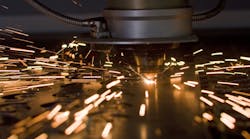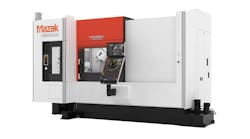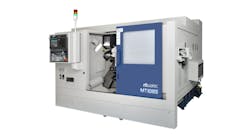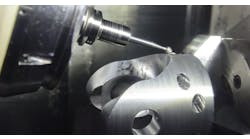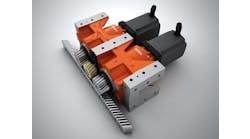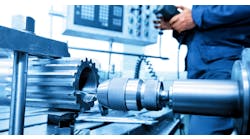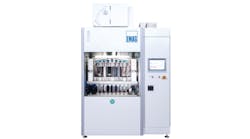Laser-cutting machines offer productivity and precision, while minimizing material waste. Modern manufacturers need laser cutting to meet increasing demands for accuracy and efficiency. However, laser beams contain concentrated energy that, if mishandled, can cause severe burns, permanent eye damage, and substantial equipment deterioration. Therefore, manufacturing teams working with laser cutting systems need clear safety guidelines and proper protective measures to prevent accidents and maintain operational efficiency.
A comprehensive safety approach addresses three critical points: it prevents contact burns from heated materials and surfaces, protects eyes from direct and reflected beam exposure, and maintains equipment to prevent malfunctions. Manufacturing teams that prioritize these safety elements will establish a work environment where laser cutting technology serves its purpose while keeping operators safe and equipment running reliably.
Preventing burns
Laser cutting generates intense heat that makes materials and surrounding surfaces dangerous to touch. The focused beam heats metals and plastics to their melting points, creating both direct burn risks from the cutting zone and secondary hazards from heated materials and reflected energy. To prevent injuries, manufacturing teams must combine proper PPE with strict material handling procedures.
A systematic approach to heat management includes identifying all potential burn sources and establishing clear safety zones around active cutting areas.
Materials processed by laser cutting retain heat long after the beam moves on, creating hidden dangers throughout the production floor. Metals conduct heat differently than plastics or composites, requiring specific handling protocols for workpieces of different material types. Shop teams need reliable methods to track cooling times and surface temperatures, particularly when running multiple material types or managing high-volume production schedules.
Understanding heat-related hazards
During laser cutting, heat transfer happens through direct contact, radiation, and conduction through tools and fixtures. Materials can retain dangerous temperatures long after cutting stops, so that seemingly cool surfaces a burn risk. Shop teams need accurate temperature-monitoring systems and clear visual markers to identify high-risk areas.
Secondary heat sources, including exhaust systems and beam guides, add hidden burn risks to the workspace. These components can heat up during normal operation and maintain dangerous temperatures without visible warning signs. Regular thermal imaging scans help identify these less obvious hazard zones.
Protective measures and response
Proper personal protective equipment starts with heat-resistant gloves rated for the specific materials being cut. A workplace first aid station should include supplies for treating burns and establish clear protocols for treatment. Machine operators need dedicated cooling stations and specific material handling tools matched to their cutting applications.
The workspace layout plays a critical role in burn prevention. Designated cooling areas, clear signage, and proper material flow reduce accidental contact with hot surfaces. Teams need documented procedures for handling hot materials and responding to potential burn incidents.
Protecting eyes from laser exposure
Industrial laser beams pose significant risks to unprotected eyes through both direct exposure and reflected light. The concentrated energy can cause immediate damage to the retina and cornea, with effects ranging from temporary flash blindness to permanent vision loss.
Manufacturing teams face additional risks from beam-scatter off materials and workspace surfaces, making comprehensive eye protection protocols essential for everyone in the cutting area. This protection extends beyond the machine operator to include maintenance staff, supervisors, and visitors who might enter the workspace while equipment is running.
Eye safety protocols must account for the specific wavelengths and power levels used in each cutting application. Different materials can create unique reflection patterns and scatter profiles, requiring careful assessment of protection needs throughout the workspace. Machine enclosures, protective screens, and designated safe zones, along with personal protective equipment, create multiple layers of defense against accidental exposure.
Understanding laser eye hazards
Direct beam exposure results in immediate and severe damage to eye tissue, often before a person can react. The eye's natural focusing ability intensifies the laser energy, multiplying its damaging effects on the retina. Different wavelengths target specific eye structures, making proper protective equipment selection critical.
Reflected beams from smooth surfaces and scattered light from cutting materials create secondary exposure risks throughout the workspace. These indirect exposures may have lower intensity than the primary beam but still carry enough energy to damage eye tissue over time. Multiple reflection points can create unexpected hazard zones beyond the immediate cutting area.
Protection systems and controls
Protective eyewear requires specific ratings matched to the laser wavelength and power levels used in cutting operations. Goggles and face shields must maintain their protective qualities through daily use, requiring regular inspection and replacement schedules based on wear patterns and exposure time.
Physical barriers around cutting areas add more protection against stray beams and reflections. Machine enclosures with proper viewing windows, beam dumps to catch reflections, and matte-finished surfaces reduce scattered light.
Regular workspace assessments help identify new reflection hazards as equipment configurations change.
Safeguarding equipment
Laser cutting systems require precise calibration and consistent maintenance to ensure they are safe to operate. Machine components become stressed from heat, debris, and continuous operation that can lead to misalignment, worn optics, or control system issues. These problems reduce cut quality and create safety risks through beam scatter, material ignition, or system failures.
Now, automated monitoring and control systems offer manufacturers new ways to maintain safety standards while improving operational efficiency.
Safety protocols must evolve with advancing automation capabilities in laser-cutting operations. In particular, artificial intelligence introduced possibilities for equipment monitoring, supplementing traditional safety protocols with predictive analytics and real-time problem detection. Manufacturing teams need structured approaches for implementing automated safety features, ensuring that protective measures keep pace with production capabilities while maintaining the reliable operation of core system components.
Maintenance and inspection protocols
Daily equipment checks focus on critical components, including beam delivery systems, assist gas lines, and ventilation equipment. Teams need documented procedures for inspecting optical components, checking coolant levels, and testing emergency stops. These basic maintenance tasks prevent the most common failure modes, leaving only the most crucial errors for workers to address.
Regular calibration schedules maintain beam focus and power consistency across the work envelope. Accurate record-keeping tracks component life cycles and helps predict replacement needs before failures occur. A proactive approach will reduce safety risks and minimizes unexpected downtime, and keep operations running smoothly.
Advanced monitoring systems
Modern laser systems integrate automated front-end processes that reduce manual handling risks. Smart laser cutting automation starts with programming for material efficiency, to prevent the safety hazards of wasted cuts and excessive material movement. These systems will optimize workflow while maintaining strict safety protocols through each production phase.
Manufacturing teams can implement automation gradually, and add safety features and monitoring capabilities in planned stages. Digital controls manage material flow and beam parameters to prevent unsafe operating conditions while monitoring networks to track system performance for early warning signs of problems.
Effective laser-cutting safety combines physical protection, strict protocols, and advanced monitoring. Manufacturing teams that prioritize safety reduce injury risks while maintaining productive operations. A well-planned safety program protects workers from burns and eye injuries while preserving expensive equipment through regular maintenance and automated monitoring systems.
Shop managers can create effective safety programs by systematically addressing each protection layer. Physical safeguards – from ppropriate PPE to machine enclosures – are the first line of defense. Regular maintenance routines, automated monitoring, and clear safety protocols then work together to prevent accidents and equipment damage. This comprehensive approach lets manufacturing teams use laser-cutting technology to its full potential while protecting personnel and equipment.
Ainsley Lawrence is a freelance writer and editor.
